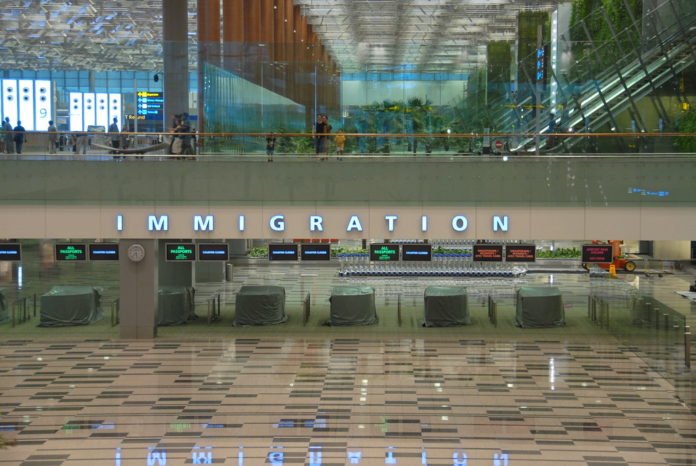From Monday (June 8), Singapore will gradually reopen its borders by first allowing essential business or official trips between the country and six provinces in China.
Under a “fast lane” arrangement which was announced on May 29, the provinces involved are Shanghai, Tianjin, Chongqing, Guangdong, Jiangsu and Zhejiang, with more to be added to the list over time.
However, things are not as easy as it seems. Singapore’s Ministry of Foreign Affairs (MFA) and the Ministry of Trade and Industry (MTI) have jointly released the details of the arrangement for essential travels between Singapore and China.
Are these signs of things to come when the travel bubble between Singapore and other countries are formed?
So if Singapore starts opening up to other countries in the ‘safe’ region, we can expect similar arrangements. Like travellers will have to undergo two swab tests — first in their country of residence and another in the destination country. The travellers will also have to stick to the itinerary that has been decided by their sponsors in the host countries, which would have been approved earlier by the relevant government agencies.
“This is part of Singapore’s gradual reopening of our borders for Singaporeans and residents to conduct essential activities overseas and to allow safe travel for foreigners entering Singapore in limited numbers, with the necessary safeguards in place to ensure public health considerations are addressed.” – MTI/MFA
Under the special arrangements, Singapore-based officials or business travellers who need to make an essential trip to China have to take the following steps:
- Obtain a letter of sponsorship from the relevant Chinese organisation, whether it is a government agency or business entity
- The sponsor will file an application with the local provincial or municipal authorities
- An invitation will be issued to the traveller once the application is approved
- Apply for a visa at the Chinese embassy in Singapore, if required
- Submit health declaration to the Chinese authorities
- Take a Covid-19 swab test within 48 hours before one’s scheduled flight, at one’s own cost
- Once the swab test results come back negative, the traveller can board the flight, taking the necessary precautions, such as wearing a mask at all times, even in-flight
- Take another Covid-19 swab test and a serology test, which tests for the virus’ antibodies, once one has reached China, at one’s own cost
- Remain in a quarantine location designated by the local provincial or municipal government for one to two days until the test result is out
- If tested positive, the traveller will remain in China for medical treatment at his own cost
- If the test result comes back negative, the traveller can proceed with the itinerary that was planned by his sponsor, and he must adhere to it for the first 14 days
- The traveller must use China’s local health QR code for the duration of his stay
If a traveller needs to go to another one of the six provinces within the first 14 days after arriving in China, he needs to obtain advanced approval from the provincial government of his next destination.
The traveller can go outside the six provinces only after 14 days in those six provinces.
For residents in China who are entering Singapore for official or business trips, they have to remain in one of the six provinces where they are coming from for at least seven days before flying to Singapore. A traveller also has to:
- Obtain a letter of sponsorship from the relevant Singapore organisation, whether it is a government agency or business entity
- Apply for a SafeTravel pass with the authorities here, which will approve or reject the application
- Once approved, the traveller can apply for a travel visa to Singapore, if required
- Electronically submit pre-trip health and travel history declarations via the SG Arrival Card, before entering Singapore
- Take a Covid-19 swab test within 48 hours before one’s scheduled flight
- Once the swab test results come back negative, the traveller can board the flight, taking the necessary precautions, such as wearing a mask at all times, even in-flight
- Take another Covid-19 swab test once one has reached Singapore at his own cost, which will be administered at Changi Airport, or other landing points if one comes in via a private or chartered flight
- The traveller will then be taken to the accommodation arranged by the sponsor and remain in self-isolation while waiting for the test result, which is expected to come in one or two days
- If tested positive for Covid-19, the traveller will undergo medical treatment in Singapore at his own cost
If the result of that test comes back negative, the traveller can then proceed with the itinerary that was planned by his sponsor and he must adhere to it for the first 14 days. The traveller also has to download Singapore’s contact tracing mobile application Trace Together.
In short, it is not that easy to travel (yet) even after the travel bubble/Green Lanes are formed. It is a lengthy, expensive and laborious process to make sure one is Covid-free in order to roam freely. To add, the mentioning of ‘own cost‘ alone – stated in the measures – should be enough to give maybe-not-so-essential essential travellers to think twice of travelling. Green Lanes or not.





